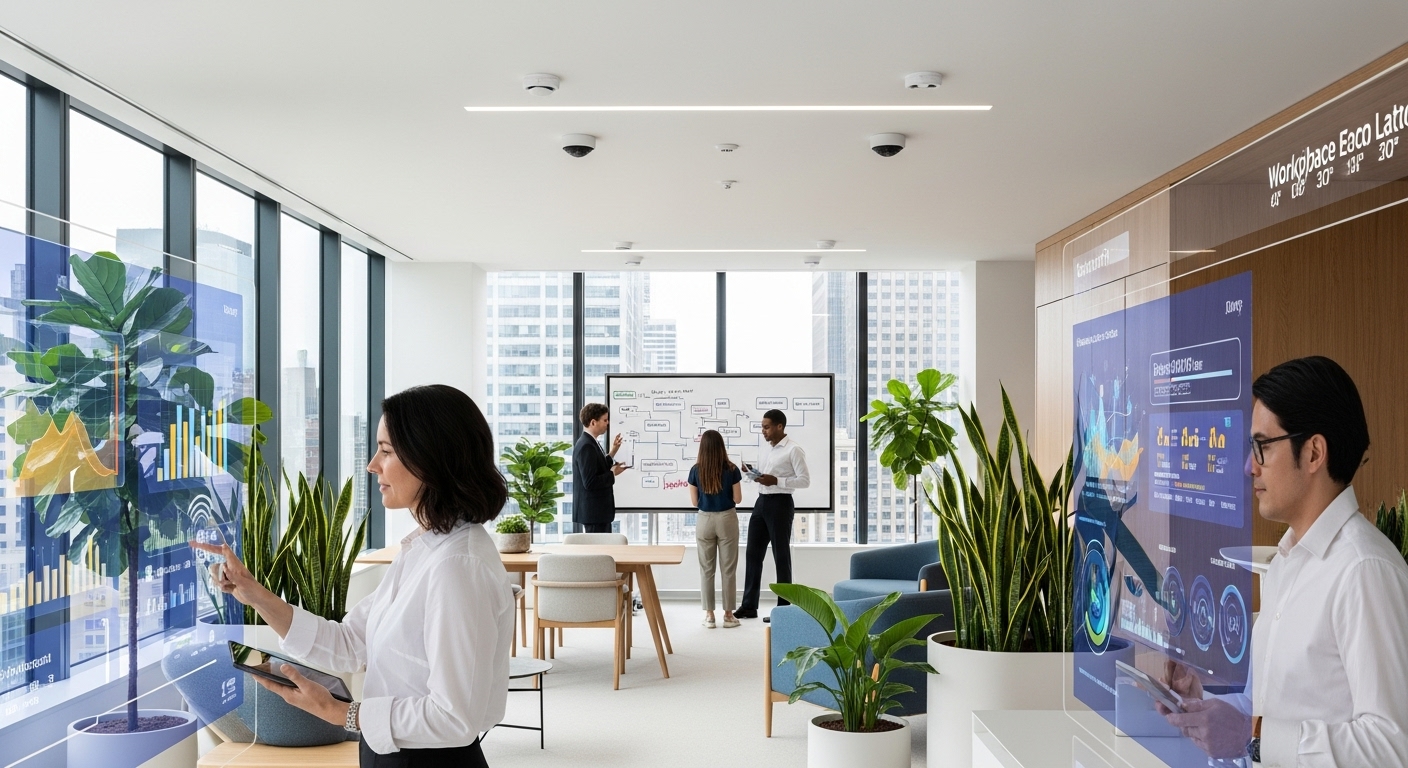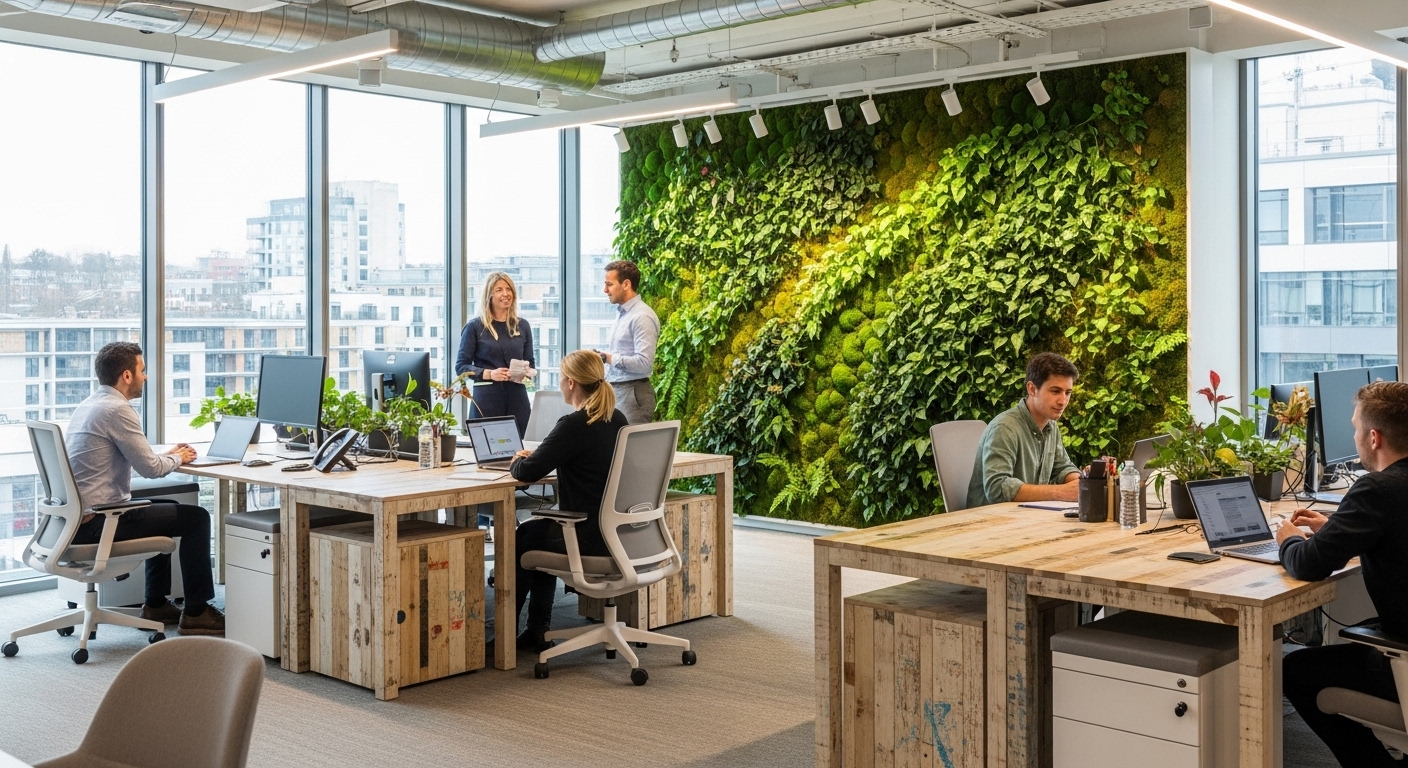The modern workplace is no longer just a physical location; it’s a dynamic ecosystem designed to foster productivity, collaboration, and well-being. In the era of hybrid work, companies are rethinking their physical footprint, and smart office technology has emerged as the critical enabler of this transformation. Moving beyond mere gadgets and novelties, a truly intelligent office is built upon a set of foundational pillars that work in concert to create a responsive, efficient, and human-centric environment. This isn’t about chasing trends; it’s a strategic investment in the future of work. Understanding these core components is the first step for any organization looking to build a workspace that not only supports its operational goals but also attracts and retains top talent. This article will deconstruct the essential pillars of a modern smart office, exploring the core technologies that form the bedrock of connectivity, environmental control, space management, security, collaboration, and data-driven decision-making. By integrating these elements, businesses can create a seamless experience for employees, whether they are in the office or working remotely.
The bedrock of connectivity: Smart networking and IoT infrastructure
Before any smart device can function, it needs a robust and reliable network. This is the central nervous system of the intelligent workplace. Traditional office networks are often ill-equipped to handle the massive data load generated by thousands of connected sensors, cameras, and employee devices. The first pillar, therefore, is a high-performance networking infrastructure, often built on Wi-Fi 6 or 6E technology. These standards provide higher speeds, lower latency, and greater capacity, ensuring that everything from video conferencing to real-time sensor data transmission runs smoothly. Equally important is the underlying physical infrastructure, particularly the use of Power over Ethernet (PoE) technology. PoE allows a single network cable to provide both data connectivity and electrical power to devices like smart lights, security cameras, and occupancy sensors. This dramatically simplifies installation, reduces cabling costs, and offers centralized power management. By building this powerful and scalable foundation, an organization ensures that its smart office ecosystem is not only functional today but also ready for future technological advancements. Without this bedrock of connectivity, any investment in other smart technologies will be fundamentally undermined, leading to a fragmented and frustrating user experience.
Intelligent environmental controls: Enhancing comfort and efficiency
Employee well-being and sustainability are no longer secondary considerations; they are core business imperatives. The second pillar of a smart office directly addresses these priorities through intelligent environmental controls. This system moves beyond simple thermostats and light switches, creating an environment that actively responds to its occupants and external conditions. Smart lighting systems, for example, can utilize circadian rhythm programming, adjusting color temperature and intensity throughout the day to align with natural light patterns, which has been shown to improve mood and focus. These systems also integrate with occupancy sensors to automatically dim or turn off lights in unused areas, generating significant energy savings. Similarly, smart HVAC (Heating, Ventilation, and Air Conditioning) systems learn occupancy patterns to optimize heating and cooling, preventing the wasteful conditioning of empty rooms. Advanced systems also incorporate indoor air quality (IAQ) sensors that monitor levels of CO2, volatile organic compounds (VOCs), and humidity, automatically adjusting ventilation to maintain a healthy and productive atmosphere. This not only creates a more comfortable and pleasant workspace but also demonstrates a tangible commitment to employee health and corporate environmental responsibility, reducing the building’s carbon footprint and operational costs.
Dynamic space management: Optimizing every square foot
In the hybrid work model, the static, one-desk-per-employee office is obsolete. The third pillar, dynamic space management, leverages technology to make the workplace flexible, agile, and efficient. At its core are integrated booking systems for desks, meeting rooms, and collaboration spaces. Through a simple mobile app or desktop interface, employees can view real-time availability and reserve a space that suits their needs for the day. This eliminates the uncertainty of finding a spot and empowers a ‘hot-desking’ or ‘hotel-ing’ model. This technology is powered by a network of discreet IoT occupancy sensors installed under desks or on ceilings. These sensors provide anonymous, real-time data on which spaces are actually being used, distinguishing between a booked desk and an occupied one. This information is invaluable for facilities managers, who can analyze utilization trends to understand how the office is truly functioning. Is a specific collaboration zone always empty? Are small focus rooms in high demand? This data allows for informed decisions about office layout, furniture investment, and even long-term real estate strategy, ensuring that every square foot of the office provides maximum value and supports the evolving needs of the workforce.
Seamless and secure access: Modernizing workplace entry
The traditional key card is quickly becoming a relic of the past. The fourth pillar of the smart office is a modernized access control system that prioritizes both security and a frictionless user experience. This begins with mobile-first, keyless entry. By leveraging Bluetooth or NFC technology, employees can use their smartphones as secure digital credentials to unlock doors, access elevators, and even pay for items in the company cafeteria. This not only enhances convenience but also simplifies administration, as digital credentials can be issued or revoked remotely in real-time. For higher-security areas, this can be augmented with biometrics like facial recognition or fingerprint scanners. The system extends beyond employees to include visitors. Smart visitor management platforms allow guests to pre-register online, receive a QR code for entry, and automatically notify their host upon arrival. This streamlines the check-in process, enhances security by creating a digital log of all visitors, and presents a professional, tech-forward image to clients and partners. When integrated with room booking systems, access can be automatically granted to specific meeting rooms for the duration of a scheduled event, further automating and securing the workplace environment.
Data-driven insights: The role of workplace analytics
Perhaps the most transformative pillar of the smart office is its ability to generate actionable insights from data. While the previous pillars focus on specific technologies, this one is about the intelligence layer that ties them all together. Every sensor—from occupancy and air quality to lighting usage—collects valuable, anonymous data points. A central workplace analytics platform aggregates and visualizes this information, transforming raw data into a clear picture of how the office is operating. Facilities managers can view heatmaps of foot traffic to identify bottlenecks or underutilized areas. Real estate leaders can analyze long-term utilization trends to make strategic decisions about expanding or consolidating their portfolio. HR and leadership can correlate environmental data, such as air quality or lighting levels, with employee engagement surveys to better understand the impact of the physical environment on well-being. This data-driven approach removes guesswork from operational and strategic planning. Instead of relying on anecdotes or assumptions, decisions about office design, resource allocation, and employee experience can be based on empirical evidence. This allows the organization to continuously optimize its space, ensuring it remains aligned with the needs of its people and the goals of the business.
Unified communication and collaboration: Bridging the hybrid gap
A smart office is incomplete if it fails to seamlessly connect in-office staff with their remote colleagues. The final pillar, unified communication and collaboration (UCC), is dedicated to closing the gap in the hybrid work experience. This goes far beyond standard video conferencing software. It involves equipping meeting rooms with intelligent hardware designed for equity. Smart cameras with auto-framing and speaker-tracking capabilities ensure that remote participants can clearly see who is speaking, making them feel more present in the room. Advanced microphone arrays capture audio from every corner, eliminating the common problem of in-room participants sounding distant or muffled. Interactive smart whiteboards allow for real-time digital collaboration, where ideas sketched in the room are instantly shared and editable by remote team members. These tools are integrated into a single, user-friendly platform that works in concert with room booking systems. An employee can book a room, and when they walk in, the video conference is ready to launch with a single tap, with all necessary hardware configured automatically. By investing in this pillar, companies ensure that collaboration is effective and inclusive, regardless of an employee’s physical location, which is fundamental to the success of any modern hybrid work strategy.
In conclusion, building a smart office is a strategic, multi-faceted endeavor that extends far beyond deploying isolated pieces of technology. It requires a holistic approach centered on the foundational pillars of connectivity, environmental control, space management, security, analytics, and collaboration. When woven together, these elements create more than just an intelligent building; they cultivate a responsive and adaptive workplace ecosystem. Such an environment not only drives operational efficiency and reduces costs through optimized energy and space utilization but also places employee well-being and productivity at its core. By providing a seamless, secure, and comfortable experience, companies can empower their teams to do their best work. As the competition for talent intensifies and hybrid models become the norm, the smart office will cease to be a luxury and will instead become a defining characteristic of forward-thinking organizations. It represents a powerful investment in people, productivity, and long-term resilience, creating a physical space that is as agile and dynamic as the business it houses.





